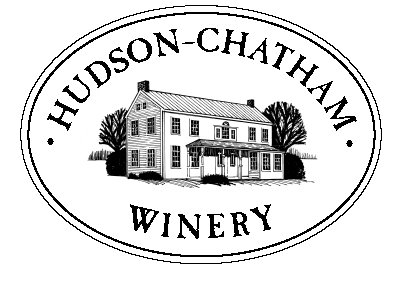Forbes.com Raves About Hudson-Chatham Baco Noir Reserve 2010
Baco Noir Might Be America's Most Patriotic Wine
Katie Kelly BellForbes.com Travel
7/01/2013 @ 10:02AM |341 views
I first met Baco Noir in a bar. (I admit, this already sounds like a bad perfume advertisement). I was part of a large gathering of wine and food writers/bloggers and we were busy passing around bottles of various wines. The buzz over the wine reached me before the actual bottle did: “Oooh, Baco Noir, where did you find it?” “Real American wine!” “Baco Noir, let me see that bottle!” Naturally I wanted to try what all the cool kids seemed to like. Once the wine, made by Hudson-Chatham winery , reached my hands a quick scan yielded two surprises. One, the wine was made in the Hudson River Valley and two; it was made from a grapevine with a curious provenance.
Most wine,including wine made in California, is a product of Vitis vinifera—a European grape vine import that is the source of almost 99% of the world’s wine today. Many moons ago, when the phylloxera louse wiped out the vineyards of Europe, botanists set to the task of creating a super vine that would resist the pest. Nothing much came of it and European winemakers instead chose to take American Vitis vinifera (which had proven resistant to phylloxera) and graft it to their remaining rootstock. Grape growing returned to normal, save for one outlier: Baco Noir, a hybrid created by Francois Baco, a native of Southwestern France. What’s interesting is that Baco’s hybrid contains a blend of Vitis vinifera and Vitis riparia, which is a purely North American, not European, species. So, our prized Baco Noir has an American parent so to speak…which just brings out the patriot in me.
I emailed the owner of Hudson-Chatham Baco Noir, and asked him what it was like to work with this hybrid and if he thought it was more American than Vinifera.
He writes, “Well, I’m not sure it’s THE MOST quintessentially American, but it definitely American. Vitis riparia is one of the parents of the grape, and it has the widest and largest geographical range of any of the North American Vitis species. It is present across nearly the entire eastern half of North America and the most western portions of the Great Plains, and has also been found in Montana, Nebraska, and North Dakota. Regardless, I’m in love with it; Baco can be so many things. You can make it big and brawny, and make a more Bordeaux style of wine with it if you blend it (it’s a great blender), or you can baby it and make it into something special on its own.”
Hudson-Chatham’s version is a silk glove with Burgundian sensibilities—like the hybrid it’s made from it blends the verve and bounce of America with the elegance and nuance of Europe. Carlo notes that, “Many versions I’ve had make big dark inky wines. We don’t do that. We make a much lighter, more Pinot Noir style. We don’t let it sit on the skins too long. We keep it light, and really chase the bright sour cherry and raspberry flavors. We baby it in used French oak and aim to make it in a Burgundian style. “ A style rich with raspberries, sour cherry, lavender and earth—and some cassis lingering on the edges, just a stunning wine.It wouldn’t be very democratic of me to wax poetic about this wine and leave readers hanging. Below you’ll see where it’s sold…and of course you can always buy online. And, given the wine’s Burgundian proclivities, Oregon producers are getting in the game as well. I made one more discovery about the wine that night (as if I wasn’t feeling patriotic enough), it was corked with an American-made cork from the Nomacorc factory in North Carolina. (insert proud American sigh here).
The French-American hybrid grape Baco noir with clusters on the vine. (Photo credit: Wikipedia)
Oregon Baco Noir can be found through:
Girardet WineryChateau Lorane
Hudson-Chatham, 2010 Baco Noir can be found in NYC (see below) or Check their website.
The Wine HutAstor Wine& Spirits
Read more at:
http://www.forbes.com/sites/katiebell/2013/07/01/baco-noir-might-be-americas-most-patriotic-wine/




0 Comments:
Post a Comment
<< Home